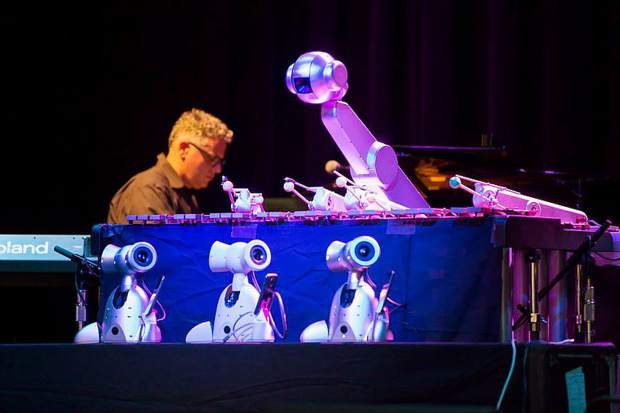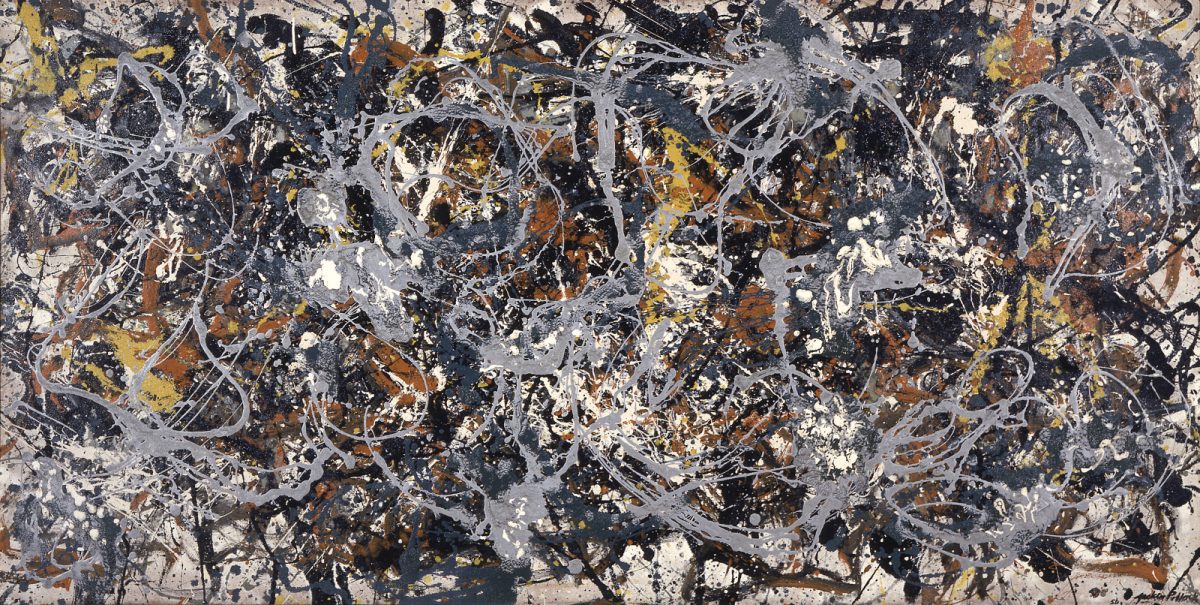Shimon is a musical improvisation robot developed at the Georgia Tech Center for Music Technology. The robot plays marimba following the performance of a human musician where, after hearing chords the musician plays, Shimon can then quickly take in the information and play a tune similar to what a human might improvise if given the same task. Jazz music, though known for its improvisation and “randomness,” so to speak, actually follows a series of rules that can be bent/structured in certain ways to find new creative sounds. Shimon works in a similar way where, although the improvisation can seem random, it actually works based on similar “rules” or detailed algorithms/ artificial intelligence that allows him to play a beat based on those already human-developed rules for improvisation. I find this project especially interesting due to its ability to connect humanity and robots through music, while still preserving the improvisational qualities of genres like jazz.
Category: LookingOutwards-06
week 6 blog
The article I ended up finding the most interesting wasn’t about a particular artist, it instead talked a bit about the history of randomness and then the application of randomness in art among other things now. One example that was given was in the field of architecture, randomness is used for things that are unimportant like blades of grass. But in other cases the randomness can be used to reveal patterns that were previously unnoticed or not given enough attention. Another example uses randomness to generate randomness which creates intrigue and surprise in designs. An example that I can think of is a website called coloors which uses random generation to create color palettes and when you save a color you like it bases the next colors off of that one. Although it isn’t completely random, it still is to some extent even if it does have limitations. I guess it’s more like a gaussian random function because it has some limitations that can be incorporated.
Looking Outwards-06
A project that I find interesting is the Dall-E mini software that became vary popular this year. The way that it works is using AI software to generate images from any prompt. Many people used this for comedy, because the software is able to make any image typed, even if it’s impossible to actually occur. Randomness is involved in the way that the photos compile themselves with the AI software. The programming works in order to generate prompts with information that developers have given to the website. I really admire this project because it’s quite fun to compile images into something that isn’t actually possible to create something impossible, which is creative and unique design. Many of my friends have made amusing things with it, and I find it so interesting that computing was used in order to randomly generate any prompt that someone may think of into a picture.
Link to Dalle-Mini.
Andrej Bauer’s random art generator
Andrej Bauer’s random art generator
Alexia Forsyth
Bauer’s random art generator utilizes pseudo-random numbers to construct a mathematical formula. This formula is responsible for each pixel color and sequence of random choices. I really admire the semi formed appearance of Bauer’s pieces. Though random, his series have a particular look and create distinct, colorful visuals. His generator is able to transform into completely new and unique pieces with one word change in the program. I appreciate the versatility. For example, this particular piece, can be interpreted in many different ways; for me, it looks like a stingray.The artist uses an acyclic directed graph coded in the python coding language and implemented in ocaml.
Link: https://www.random-art.org/about/
Looking Outwards 06- Section A
Kaitlyn Chow
I was inspired by Tyler Hobbs’s watercolor paintings that I found in his article “How to Hack a Painting.” I specifically looked at his piece Linear II (Welcome Back) which looks like watercolor. I thought his piece was really cool because he had to use a lot of intentional layering and calculations to get that watercolor effect but he also used a bit of randomness to keep it interesting.
His artistic senses are really shown because watercolor is very flowy. This contrasts from coding on a computer where everything is defined and it seems hard to get it flowly. However, watercolor is usually slightly random because the paint flows and spreads based on the water and the paper.
For the main shape, he makes rough edges by including very tiny details. So, it appears to be textured. Combining these with a low opacity, it creates the edges that give the signature watercolor effect.
It is interesting because he described how there is, “a lot of carefully applied randomness in these [pieces].” So, he artfully sprinkles randomness in his paintings so that we would see something different each time.
Here is the link to the piece:
Linear II (Welcome Back), 2017, Tyler Hobbs
LookingOutwork 6 Randomness
Link: https://www.slam.org/collection/objects/27407/
The piece I want to focus on is Jackson pollock’s Number three. In this
painting, he “layered multiple strands of paint” to generate the painting
where the colors seem to be interwoven together. What I really admire by the
the piece is its apparent order despite the randomness in its creation, where
through the layering of the painting, the artist still creates this hierarchy
between the different colors of paint, demonstrating order in the chaos.
The randomness executed by the artist is a form of pseudo-randomness, where
although the pollock seems to layer on the paint randomly, he still created
the painting with an intention of not creating a focal point, thus if the
painting medium is in control of the artist, the randomness executed will
definitely, be influenced by the artist’s creative intentions.
Despite the apparent random qualities, you can still see the artistic
sensibilities of Jackson, where the painting still displays a sense of unity
with color. His artistic sensibilities are also demonstrated in the flow of
the paint, where the artist creates different thicknesses of paint lines and
curvature through how fast and how hard he pours the paint – which is another
demonstration of pseudo-randomness.
Looking Outwards 06: Randomness
I am inspired by the project, Gush by Adam Ferriss. This piece of digital, algorithmic art is created by the random noise function called Perlin noise. The noise is a pseudo-random function for generating values, which are deterministic sequences and reproducible. The function adds realistic randomness to the color and composition of the piece. Ferriss still has control over some parameters such as the speed of the color change, allowing him to generate images with gradual gradients and in turn, create crazy psychedelic transitions. What I admire about this project is that the piece is not entirely automated, while image-making itself is. Ferriss’s artistic sensibilities could be still manifested in the final piece as he adjusts the parameter’s values until he gets an aesthetically satisfying and completely new type of work.
https://www.itsnicethat.com/articles/adam-ferriss
https://www.itsnicethat.com/articles/adam-ferriss
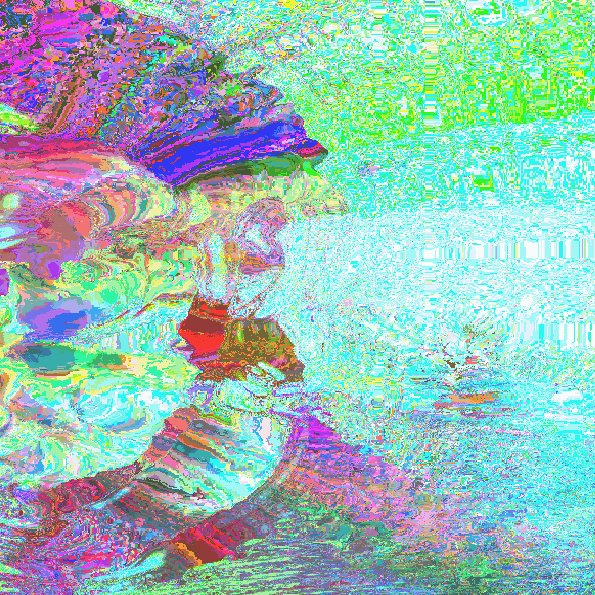
SydneyCha-LookingOutwards-06

Dizzyline is a freelance graphic design and illustration brand based in Montpellier, France.
This piece not only has a refreshing color palette, but also a “randomized” pattern that is equal parts chaotic and structured. Though it has elements that appear to be placed randomly, there is an underlying grid that gives the piece somewhat of a finished look.
The generated elements are confined by pseudo-random numbers that limit their maximum size. For example, the medium-sized circles and crescent shapes are limited to the squares within the grid, while smaller circles are aligned in straight rows.
anders hoff’s recursion
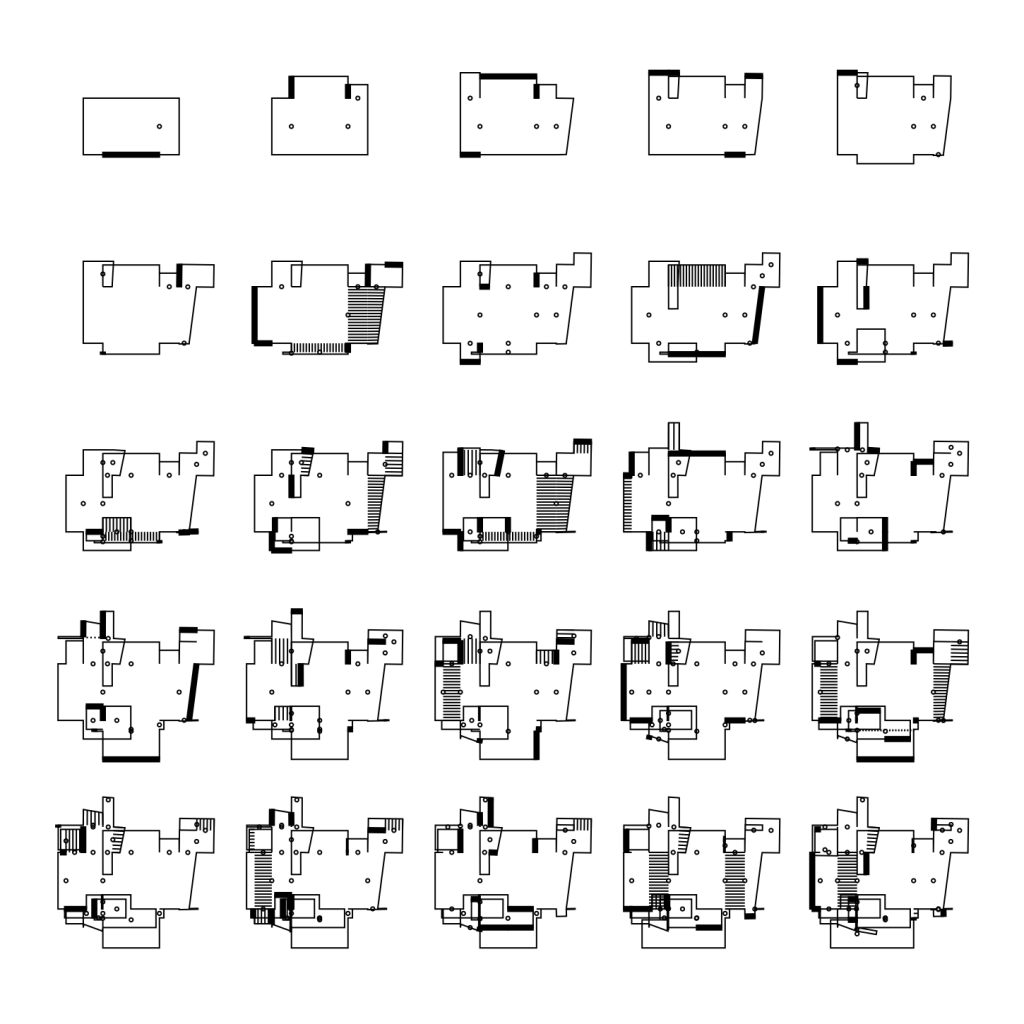
Anders Hoff’s “Impossible Architecture” (2018) is an experiment in morphing a 2D, outline of a rectangle to create a completely random “floor plan”. These insane-looking pseudo-floor plans are mostly impossible to construct, but as we look at them we attempt to make sense of them. They look convincing, with the addition of more randomly generated elements – circles, line arrays, and thick lines that we perceive as columns, stairs, and thickened walls, respectively.
He explains this recursive process on his website: a randomly selected segment of a line is extruded to a random distance, which essentially adds 3 line segments to the outline. The selected line segment is then deleted, and the process repeats. This recursion speaks for Hoff’s principles of creating “interesting and complex behavior” from systems with simple rules. He takes inspiration from nature, geometry, writing systems, and – as is obvious from this experiment – architecture.
Looking Outwards 06 – Mr.Doodle
The artwork I immediately thought of was probably anything by Mr. Doodle. The earliest memory I have of seeing his work was when he had a small Instagram following about 7 years ago. His artwork is comprised of drawing lines and characters seemingly randomly across a page, or really any surface. The only rule he seems to follow is that every inch of the surface must be covered. But I think is interesting about his work is how in his randomness, you are searching for something. Almost like you are looking for a character or a pattern or any type of regulation. I think this differs from other artworks because although his work has little characters and themes, the way he approaches these pieces is still very random. He has no plan or logic of what goes where and why. I think randomness can be blurry in the art world in terms of whether or not it is a justifiable reason for a certain design choice, but in Mr. Doodle’s case, he is using that randomness to his advantage.
Link : https://www.designboom.com/art/watch-mr-doodle-mansion-black-white-cartoonish-signature-10-05-2022/

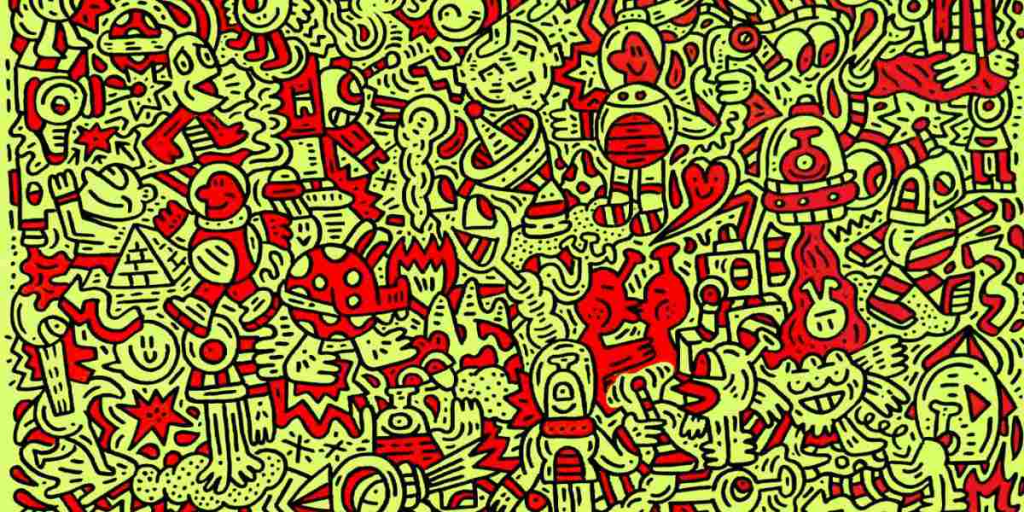
![[OLD SEMESTER] 15-104 • Introduction to Computing for Creative Practice](../../wp-content/uploads/2023/09/stop-banner.png)
